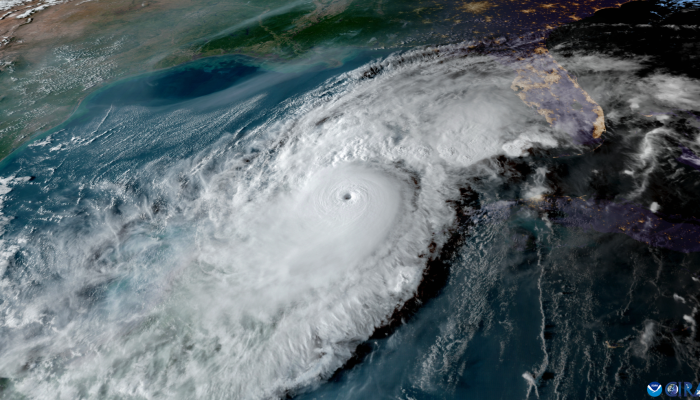Here at the Office of Emergency Management, we know how important family is. Six of our staff members welcomed babies into the world in the last few months, growing our work family and awareness of how crucial it is to be prepared for emergencies that may come our way. That’s why this National Preparedness Month we want you to be as ready as possible when it comes to the people you care about the most. To be ready, you need to start planning for an emergency now, not in the middle of one.
Your family may not be together if a disaster strikes, so think about different kinds of emergencies, like a house fire, snowstorm, power outage, or hurricane. Know how you’ll contact one another and reconnect if separated. What supplies would you need in each situation? Where would you go if you needed to leave your home?
Thinking about and planning for disasters can feel overwhelming but doesn’t have to be. We broke it down into a few manageable steps to create an adaptable and practical plan that you can design for your family’s specific needs and concerns.
- Write the plan down
Don’t rely on memory. Write down what your family will do when there is an emergency. Use the family emergency plan form to record important contact details. Make sure everyone in your household has a copy. Family members can keep the plan and emergency contacts in wallets, purses, or backpacks. - Consider specific needs in your household
As you tailor your plans and supplies to your specific daily living needs and responsibilities. Think about how you will include everyone in your household like seniors, those with special needs, non-English speakers, and pets. Fill out a health information form to keep track of blood type, health conditions, and medications for each of your family members. Keep a copy within easy access so that you or a medical professional can refer to it in case an emergency happens. - Talk about how to evacuate and shelter-in-place
If you need to evacuate, you will have to leave your home quickly. Pick two places where your family/household can meet after an emergency. One place should be near your home. The other place should be outside your neighborhood. Don’t forget your furry family. If needed, identify a place to stay that will accept your pets. When sheltering-in-place is the best option, pick one room in your home to be your shelter-in-place room. Have enough food and other supplies for three days. It should have basic supplies to help keep you and your family healthy, safe, and fed.Learn what items should be in your go bag and shelter-in place-kit (PDF) including child care supplies, books, games, or other comfort items for children. Any emergency information regarding instructions on evacuation or shelter-in-place will be sent to you through the City’s free mass notification system, ReadyPhiladelphia. - Practice your plan with your family
Practice, practice, practice! Have fire drills and use different exits every time you practice. Practice getting to your emergency meeting places to ensure everyone knows how to get there. Don’t forget to regularly have household meetings with your family to review your plans. Make sure your children practice calling and texting your emergency contacts.
Remember being prepared for disasters starts at home. Creating and practicing your emergency plan with your family will give young children and teens the tools and information they need to be ready before, during, and after disasters.
Resources
- Family Emergency Plan Form (PDF)
- Home Emergency Kit Checklist (PDF)
- Go-bag Checklist
- Family Health Information (PDF)
Get information and emergency details from the City. Text READYPHILA to 888-777 for free text alerts or visit OEM’s website at phila.gov/ready to customize your free text or emails.




